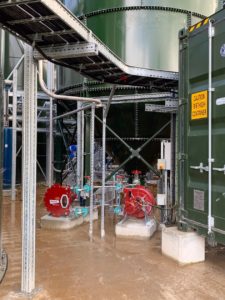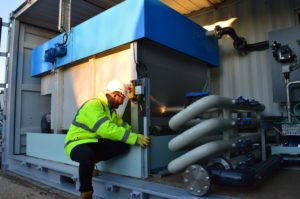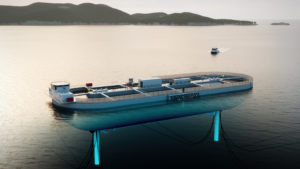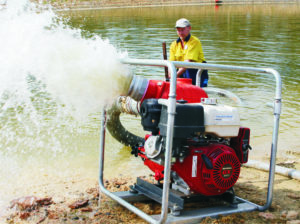Sewage Sludge at IFAT ENTSORGA 2010: Many Options for an Inhomogeneous Product
Basically there are three ways to deal with sewage sludge. The first is to use processed material as a fertiliser or as auxiliary material in landscaping or cement and brick works. The second is to use it to generate heat and electricity. And the third option is to dump it.
In 2008 in Germany around 2.1 million tonnes of sludge from local-authority sewage plants was disposed of. Around 53 percent of this quantity was incinerated, around 29 percent found its way into agriculture as fertilisers and a good 16 percent was composted or used in landscaping or for reclaiming pit tips and old industrial sites. Special permission is required in Germany to dump sewage sludge, and as a result only a very small amount is disposed of in this way - 0.1 percent in 2008.
These values are averages for the whole country, but from region to region there are considerable differences in the ratio of thermal to material processing. In Mecklenburg-Vorpommern, for example, 86 percent of the sewage sludge went into agriculture, but in Berlin thermal processing accounted for 100 percent. In Hamburg, too, 100 percent of the sewage sludge was thermally processed and in Baden-Württemberg the figure was 87 percent.
A report published at the end of last year by German trend and market researchers trend:research presents an up-to-date picture of the situation and development trends in sludge disposal in Europe. In their forecast the analysts expect the figure for processing sewage sludge into energy to rise to up to 50 percent across Europe.
Here are some examples of the findings in the report for individual countries:
In Switzerland using sludge as agricultural fertiliser has been banned since autumn 2008. Since then almost all of the material has been incinerated.
Denmark is planning to gradually move away from using sewage sludge in agriculture, which is currently the main way in which the material is used. According to the trend:research experts there are good market opportunities in the country in future for manufacturers of mono-incineration plants.
In the countries of eastern and southern Europe, the volumes of local-authority sludge will rise strongly in the coming years as more and more systems become connected to efficient sewage plants. According to the report, in 2008 an average of less than one percent of sewage sludge was processed for energy in eastern Europe in 2008. In Poland in particular, as the country progresses with adaptation to EU law, co-incineration in waste incineration plants could rise. However the construction of such co-incineration plants there is being hampered by bureaucratic obstacles and problems of acceptance among the local population.
The treatment of sewage sludge in all its facets is traditionally also a key theme at the international environmental trade fair IFAT ENTSORGA. At the New Munich Trade Fair Centre between 13 and 17 September 2010 visitors will be able to view and compare a comprehensive range of components, systems and plants offered by the market for tackling the issue of how to deal with this important waste material. All the options will be presented - from thickening to dewatering and drying, incineration and gas combustion, as well as many new ways of utilising the material.
In the events programme to the fair, the subject of sewage sludge is also being covered: At the 15th International Symposium Water, Wastewater, Waste, Energy, on the afternoon of 14th September 2010, participants will be dealing in depth with the subject of sludge management in a series of lectures and discussions.
Source: Messe München GmbH






